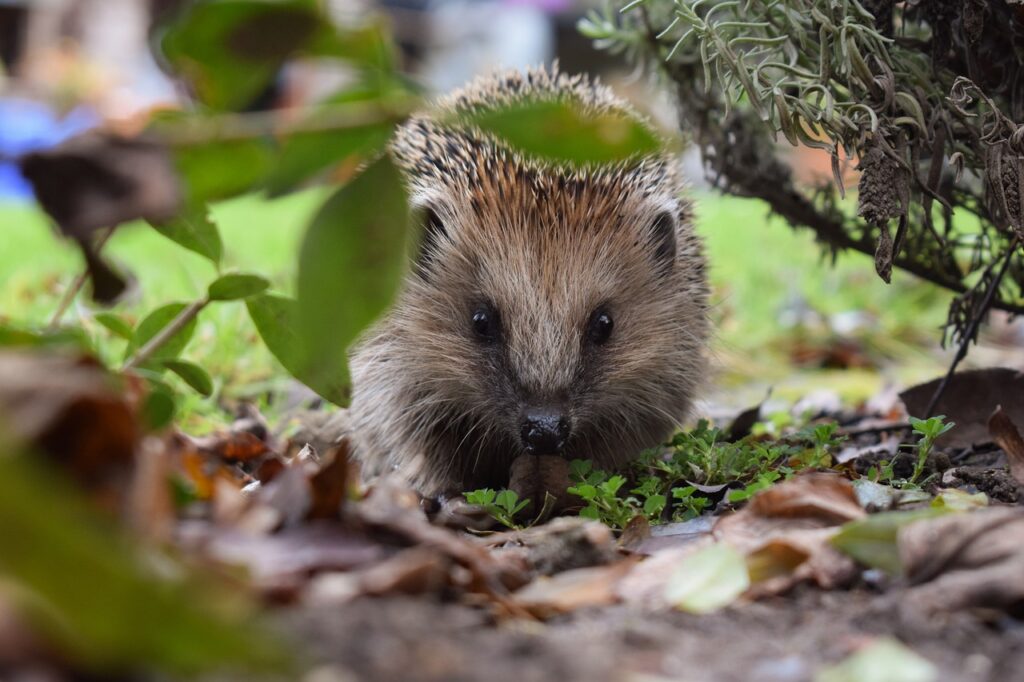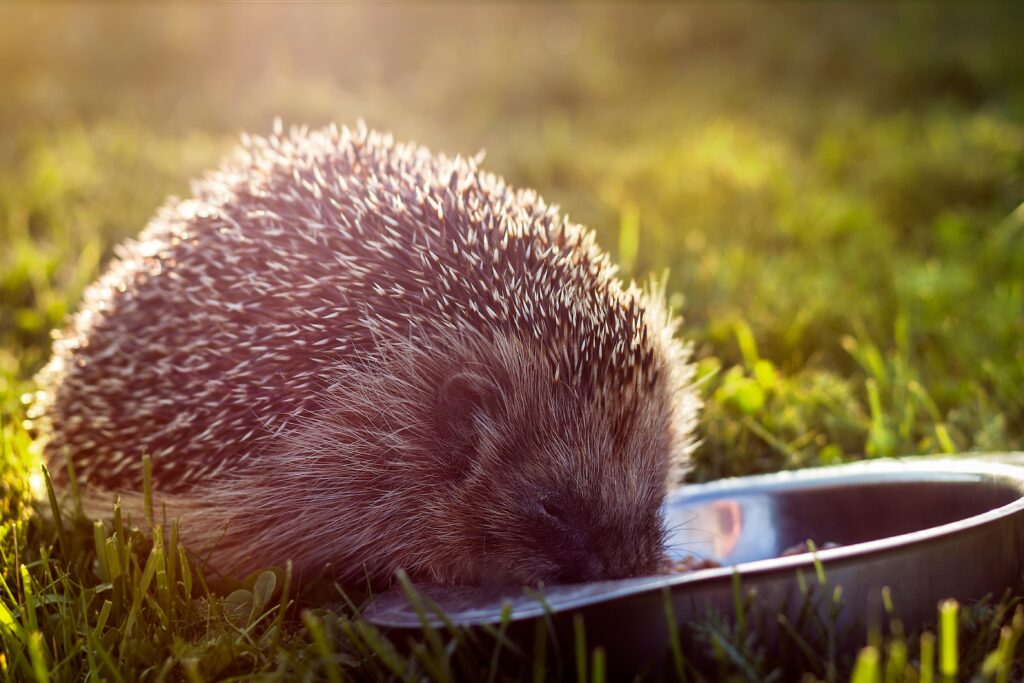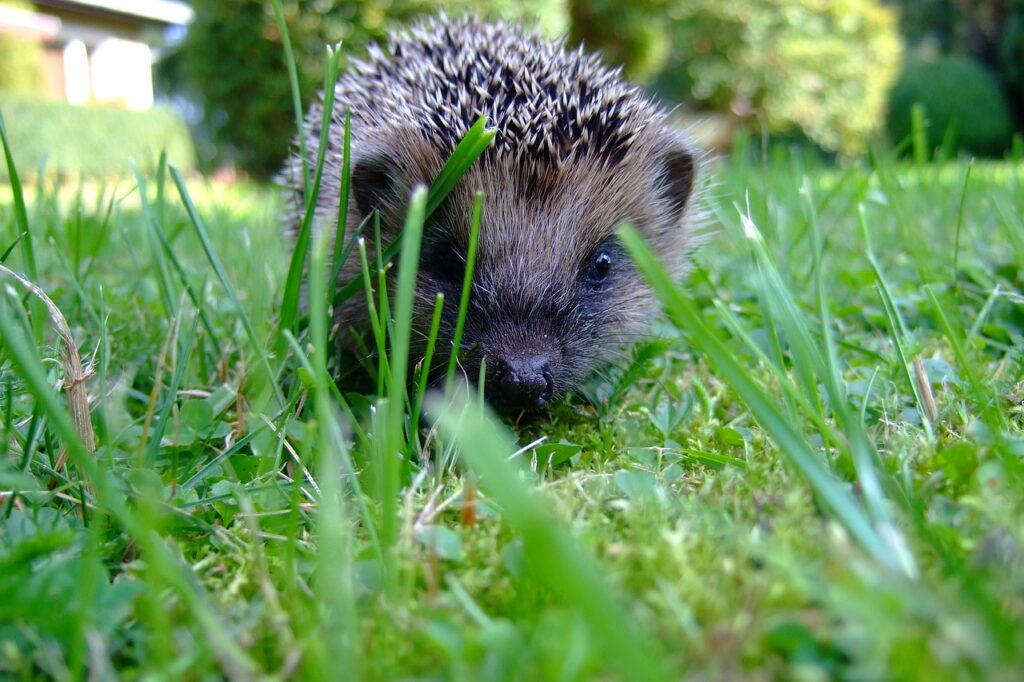
European Hedgehogs
Facts at a glance!
Size: Typically around 2.5lbs.
Diet: As omnivores, they will forage for a variety of foods in the wild, such as beetles, worms, mushrooms, or fruits
European Hedgehogs are a protected species and as such are illegal to keep as pets in many places
European hedgehogs, scientifically known as Erinaceus europaeus, are one of the most beloved small mammals in Europe. Their unique appearance and adorable behaviors have made them a favorite among wildlife enthusiasts. They are also an integral part of the ecosystem, helping keep insects under control, aerating soil, and dispersing seeds.
In this species spotlight, we will delve into various aspects of their lives, including their habitat, diet, behavior, and the pros and cons of having them in your garden.
What is a European Hedgehog?
European hedgehogs are small, nocturnal mammals covered in spines. These spines, which are modified hairs made out of the same material as your own hair, provide a formidable defense against predators. When threatened, a hedgehog will curl into a tight ball, presenting an impenetrable shield of spines. They have a distinctive face with a pointed snout and large, dark eyes that give them an easily identifiable (and adorable) appearance. They are often found in gardens foraging for their next meal, sometimes with a trail of spikey babies behind them!
Natural Environment
European hedgehogs are widespread across Europe, inhabiting a variety of environments including woodlands, grasslands, and suburban gardens. They are highly adaptable, capable of thriving in both rural and urban settings. Their preferred habitats are areas with abundant food sources and plenty of cover, such as hedgerows, which provide both shelter and a rich supply of insects and other delicious invertebrates.

Behavior and Diet
European hedgehogs are primarily nocturnal, venturing out at night to forage for food. Their diet is diverse, consisting mainly of insects, worms, slugs, and snails. They are also known to eat small vertebrates, bird eggs, and even fruit and fungi on occasion. Their nocturnal habits and solitary nature make them elusive, but they leave telltale signs such as droppings and trails through vegetation.
Reproduction and Lifespan
Hedgehogs typically breed from April to September, with a peak in May and June. After a gestation period of around 35 days, females give birth to litters of four to six young. The young are born blind and helpless, with soft spines that harden within a few hours. They are weaned at around six weeks of age and become independent shortly thereafter. In the wild, European hedgehogs can live up to five years, though many do not survive their first year due to predation, disease, and human-related hazards.
Pros and Cons of Having European Hedgehogs in your Garden
One of the biggest pros of having hedgehogs in your garden is the natural pest control they provide. They consume a variety of garden pests such as slugs, snails, and insects. Controlling the populations of these common garden pests can help mitigate damage to your plants. It’s also simply adorable to watch them going to work, and many people enjoy “hedgehog watching”.
What are the cons though?
While hedgehogs are usually very beneficial, because they are so often hard at work foraging and digging up worms or bugs, they can cause a small degree of damage to your garden. They can also carry parasites like ticks or fleas. You may not want to handle them either because apart from them being wild animals, they can possibly transmit ringworm and salmonella.

How to Attract Hedgehogs to your Garden
If you want to encourage hedgehogs to visit your garden and are in a location where they live naturally, there are several steps you can take:
First of all, your garden needs to be a safe space for your prospective hedgies. This means avoiding the use of some pesticides that could eliminate their food sources or even harm them directly.
Try providing shelter by leaving piles of leaves, logs, and brush for them to use as nesting sites. You can also buy or build a small “hedgehog house”.
You can also try attracting hedgehogs by leaving out water in small dishes and hedgehog food. Hedgehogs will especially appreciate this during dry periods when water may not be as plentiful.
Frequently Asked Questions
What do European hedgehogs eat?
European hedgehogs primarily eat insects but also consume small vertebrates and plant material.
How long do European hedgehogs live?
In the wild, they can live up to 3-7 years.
Are hedgehogs good pets?
While they can be kept as pets, they require specific care and are not legal in all areas.
How can I help hedgehogs in my garden?
Provide food, water, and safe nesting sites, and avoid using harmful chemicals.
What threats do European hedgehogs face?
They face threats from habitat loss, road traffic, and predators.
Do hedgehogs hibernate?
Yes, they typically hibernate from October to March.

Conclusion
European hedgehogs are a beloved part of European wildlife. These prickly critters are very beneficial to your garden by naturally reducing common garden pests, aerating soil, and dispersing seeds. They can, however, cause small amounts of damage, mostly by digging through flowerbeds for worms and bugs. If you wish to encourage hedgehogs to visit your garden, try holding back on pesticides, providing brush and fallen leaves for them to nest in, and leaving out water and food in small dishes.
